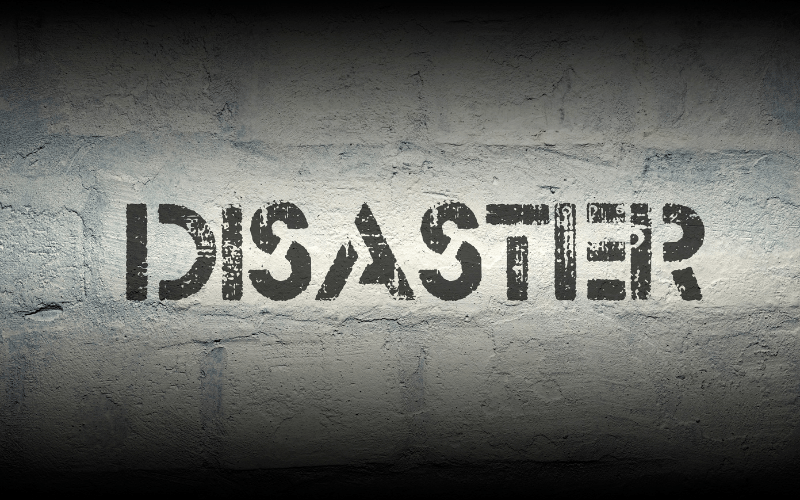November is a time to recognize the military community during Veterans Day in the U.S. We wanted to learn more about a topic that many in the military community face: racism, and how EMDR can help.
The Silent War: EMDR for Addressing Systemic Racism in the Military
 Guest Blog Post by Dr. Arielle Jordan, LCPC
Guest Blog Post by Dr. Arielle Jordan, LCPC
When people think of trauma in the military, their minds go to combat zones, deployments, and separation from family. What often gets left out of the conversation is the daily battle that service members of color face inside the system itself. Racism in the military is a silent war. It is less visible than combat but no less real in its impact.
I have heard veterans describe how a single comment from a superior officer stayed with them longer than their deployment. Others share how promotions slipped away or evaluations were marked down for reasons that had nothing to do with performance. For some, the betrayal is not a moment but a slow burn over years of service. That reality does not always make it into our case conceptualization, and when it is missing, EMDR therapy can stall.
I know this not only as a therapist but as someone who lived it. As a Black woman serving in the Army Reserves, I learned quickly that the uniform did not shield me from racism. I remember sitting at tables where my contributions were dismissed, and moments when I felt invisible in a system I was willing to give my life to. I even overheard my own sergeant use the N word. That kind of betrayal does not leave when the uniform comes off. It shapes how you see yourself and how safe you feel in the world. Those experiences stayed with me, shaping how I understood resilience and why I now bring this conversation into every training and consultation.
As an Army veteran and trauma therapist, I believe EMDR clinicians have a responsibility to name this reality. Racism is not an abstract issue. It is a lived wound that shows up in the therapy room whether or not we invite it in.
Understanding racial trauma in the military
Racial trauma is the cumulative effect of racism on an individual’s mind and body. It can feel like hypervigilance, shame, or numbness. In the military context, it often overlaps with moral injury, which is the deep violation of trust when the institution you pledged loyalty to betrays you. Service members of color may carry both, layered on top of the stress of deployments and training.
Research has begun to catch up to what many of us already know. Bryant-Davis and Ocampo (2005) named racial trauma as a legitimate category of trauma with lasting effects. Comas-Díaz, Hall, and Neville (2019) added that systemic racism can create ongoing traumatic stress responses that resemble PTSD but are rooted in cultural oppression. For veterans of color, this is not hypothetical. It is the water they swim in.
When EMDR therapists miss racial trauma in their conceptualization, we risk treating only half the story. A client may make progress with traditional targets but return week after week with the same core negative cognition: “I don’t belong.” Without addressing the systemic betrayal underneath, therapy can feel incomplete.
The STARS framework
To help clinicians move through this gap, I developed the STARS Framework: Self awareness, Thought patterns, Authenticity, Radical acceptance, and Success. It is not a replacement for the EMDR protocol but a guide for weaving racial trauma awareness into every phase of therapy.
Self-awareness starts with us as clinicians. What biases do we bring into the room? How does our racial identity shape what feels comfortable to talk about? Naming that openly can change the entire tone of treatment.
Thought patterns are often racialized. A veteran might hold the belief “I have to work twice as hard” or “I am invisible.” These are not just personal distortions. They are cultural survival strategies. EMDR can help untangle where those patterns serve and where they suffocate.
Authenticity is about making space for the client’s full identity. Too often, clients of color edit themselves in therapy to avoid discomfort. When they feel seen, they can process with more freedom. Radical acceptance means we do not minimize or rationalize systemic racism. We validate it as real, painful, and worthy of treatment. Success, finally, is about expanding what healing looks like. For many veterans of color, it is not just relief from symptoms but the ability to thrive with integrity in environments that may still be hostile.
These are the same principles I often walk clinicians through in workshops and consultation groups. Naming race, validating lived experience, and expanding what we consider “success” are skills that grow stronger with practice and support.
EMDR phase adaptations
So, what does this look like in practice? In Phase 2, I often integrate ancestral resourcing. A Black veteran might visualize a grandmother’s strength or the endurance of ancestors who survived much harsher conditions. That grounding resource offers a culturally resonant anchor before moving into desensitization.
In Phase 4, systemic betrayal often surfaces. A Latino veteran once described the moment he was told he would never be promoted because “we do not put people like you in charge.” The SUDs went high quickly, but allowing that memory into processing created space for healing. Bilateral stimulation paired with culturally affirming language helped him reframe the experience. He did not erase the racism. He reclaimed his worth.
Phase 7 future templates are powerful places to reimagine identity. For some, it is picturing themselves mentoring younger service members of color. For others, it is walking into a boardroom post-service without shrinking. EMDR therapy becomes more than symptom relief. It becomes a rehearsal for liberation.
These types of adaptations are common areas where therapists seek guidance. In many cases, clinicians want to ensure they can name systemic oppression and address racial trauma without losing alignment with the EMDR protocol. Ongoing consultation and peer dialogue help therapists approach this work with both cultural humility and clinical fidelity.
Practical tools for clinicians
Clinicians often ask, “How do I even start?” My answer is: start by asking. Ask about the client’s experience of racism in the military. Ask what messages about identity they carry into the room. And ask yourself how comfortable you are naming race.
The Racial Trauma Checklist (Willams et al., 2018) is one resource I use to make this concrete. It gives both therapist and client language for patterns that might otherwise stay invisible. Reflection questions also help:
- What biases might I bring into this case?
- How do I integrate cultural humility into Phase 2 resourcing?
- How do I support a client’s authentic identity without pushing them toward disclosure they are not ready for?
Sometimes the best tool is consultation. Racial trauma adaptations are still new for many EMDR therapists. Working with a consultant who has experience in this area can give you confidence and help you avoid missteps.
Naming racism as part of the trauma picture
Systemic racism in the military is a silent war. It wounds without bullets and lingers long after discharge. For veterans of color, it shapes their identity, their nervous system, and their relationship to institutions.
EMDR therapists have the tools to help, but only if we are willing to name racism as part of the trauma picture. With frameworks like STARS, culturally responsive resourcing, and a commitment to authenticity, we can move therapy from symptom management to empowerment.
I know this work matters because I lived through it. I remember what it felt like to have my voice ignored and to overhear my own sergeant use the N word. Today, that memory fuels my mission to make sure no client has to carry racial trauma in silence. The silent war may be real, but it does not need to stay invisible in the therapy room. The more we as clinicians build our capacity to name and treat racial trauma, the more prepared we are to help every client thrive. That work starts in our own therapy rooms and grows stronger through ongoing training and consultation.
Dr. Arielle Jordan, Ph.D., LCPC, is a U.S. Army veteran, trauma therapist, EMDRIA Approved Consultant, and international speaker. She is the author of United We Serve, United We Heal: A Practical Guide to Healing Racial Trauma and creator of the STARS Framework. She provides workshops, consultation, and is developing advanced training on racial trauma adaptations in EMDR.
References
Bryant-Davis, T., & Ocampo, C. (2005). The trauma of racism: Implications for counseling, research, and education. The Counseling Psychologist, 33(4), 574-578. https://doi.org/10.1177/0011000005276581
Comas-Díaz, L., Hall, G. N., & Neville, H. A. (2019). Racial trauma: Theory, research, and healing: Introduction to the special issue. American Psychologist, 74(1), 1–5. https://doi.org/10.1037/amp0000442
Williams, M. T., Metzger, I., Leins, C., & DeLapp, C. (2018). Assessing racial trauma within a DSM-5 framework: The UConn Racial/Ethnic Stress & Trauma Survey. Practice Innovations, 3(4), 242–260. https://psycnet.apa.org/doi/10.1037/pri0000076
Back to Focal Point Blog Homepage
Additional Resources
If you are a therapist interested in the EMDR training:
- Learn more about EMDR therapy at the EMDRIA Library
- Learn more about EMDR Training
- Search for an EMDR Training Provider
- Check out our EMDR Training FAQ
If you are EMDR trained:
- Check out EMDRIA’s Let’s Talk EMDR Podcast
- Check out the EMDRIA Focal Point Blog
- Learn more about EMDRIA membership
- Search for EMDR Continuing Education opportunities
If you are an EMDRIA Member:
Date
November 11, 2025
Contributor(s)
Dr. Arielle Jordan
Topics
Racial Trauma
Client Population
Military/Veterans, Racial/Cultural/Ethnic Groups
Practice & Methods
DEI/IDEA





